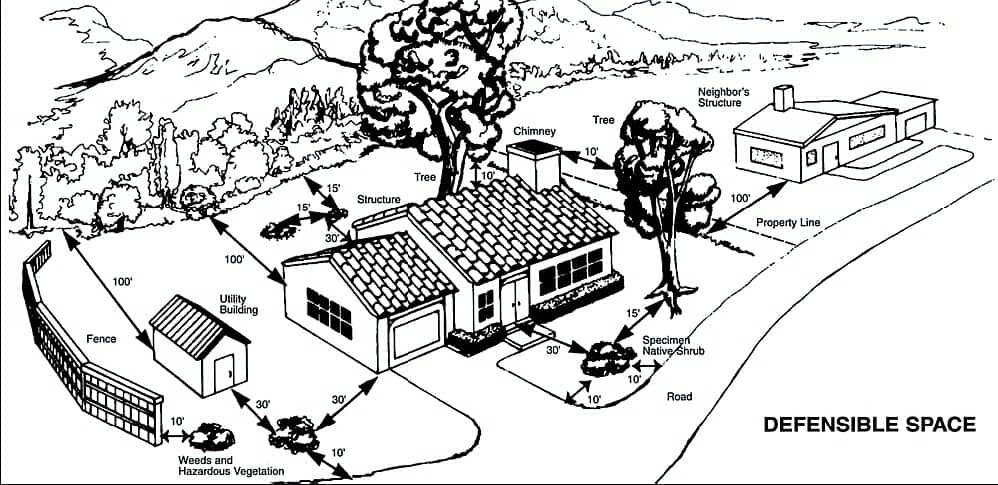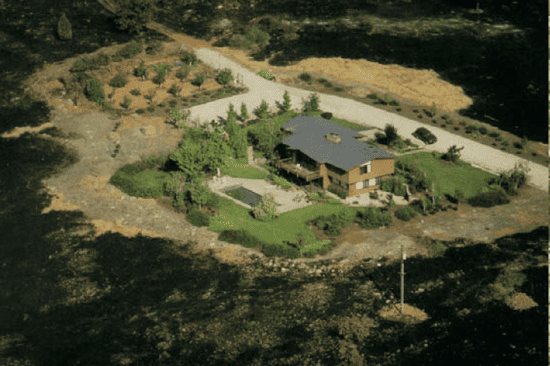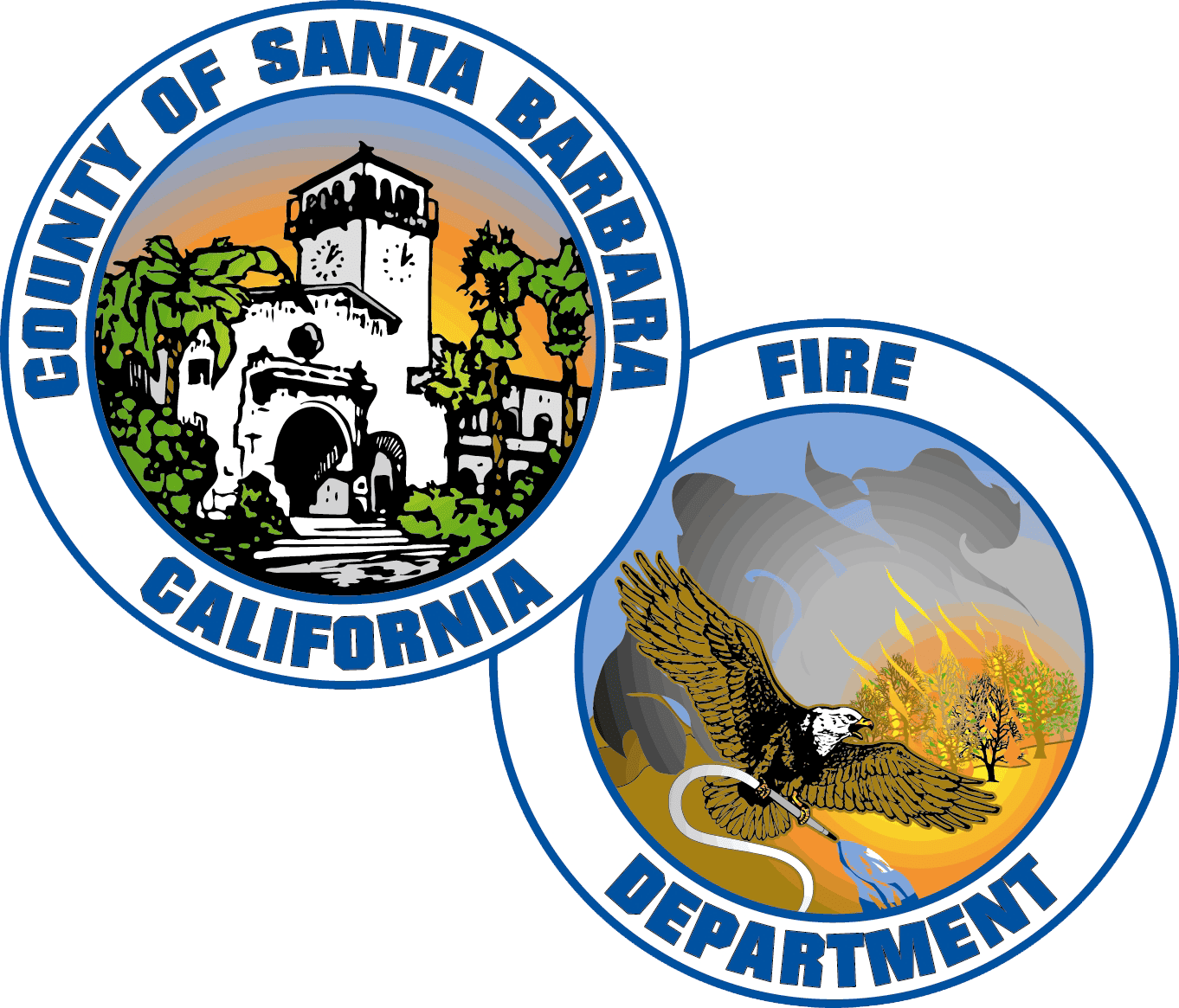
The Vegetation Management Section (VMP) is responsible for producing Santa Barbara County’s Unit Fire Plan, as well as planning and oversight of range improvement burns and VMP projects. The Unit Fire Plan ensures compliance with state mandates regarding the county’s hazardous fuel beds while range improvement burns not only assist ranchers with improved grazing lands, but assist fire managers with reduced fuel loads. Encompassed in this responsibility is the administration of the Defensible Space Program as outlined in California’s Public Resource Code 4291.
CA Assembly Bill 38: Requesting a Defensible Space Inspection
Request a defensible space inspection for your property.
On and after July 1, 2021, when you sell property that is located in a high, very high, or County-defined fire hazard severity zone you’ll need documentation of a compliant Defensible Space Inspection that complies with Section 4291 of the Public Resources Code or Santa Barbara County vegetation management ordinances. Once you have confirmed your property lies within one of these zones using the interactive map below, please fill out the form to request an inspection.
What happens after I submit the form?
By completing this form, you will be submitting your request for a PRC 4291 compliance inspection to be conducted at the address you list below. You will receive a follow-up phone call or email from your local Defensible Space Inspector to schedule your inspection.
When should I submit the request?
A copy of the completed inspection report that shows proof the property has been inspected and has passed that inspection, within six (6) months prior to entering into a sales contract.
What if my property does not pass the inspection?
If your property does not pass on the first attempt, the inspector will explain what work needs to be completed and schedule another appointment at a later date. If the property will not meet compliance with PRC 4291 standards or a local vegetation management ordinance, the seller and the buyer shall enter into a written agreement pursuant to which the buyer agrees to obtain documentation of compliance within one year after closing escrow.
Defensible Space Zones
Defensible Space General Guidelines
Defensible Space refers to an area around the perimeter of structures or developments in the wildlands where the flammable vegetation has been modified to reduce the potential for the structure and/or structures to ignite in the event of a wildfire.
Defensible space is key to defending structures from wildfire. Millions of Californians live in residential developments that border fire prone wildlands.
Each year, hundreds of homes in the wildland interface are lost to wildfires. According to the California Department of Forestry and Fire Protection (CAL Fire), as many as 80 percent of the homes lost to wildfires in the past could have been saved if the owners had followed a few simple fire-safe practices.
Clearance from all structures shall not be less than 100 feet using surface measurements. Within the 100-foot perimeter, all brush, flammable vegetation, or combustible growth shall be modified so that a wildfire burning under average weather conditions would be unlikely to ignite the structure.
Single specimens of trees, ornamental shrubbery or ground covers are permissible provided that they do not form a means of rapidly transmitting fire from the native growth to any structure. Such specimens shall be spaced a minimum of 10-15 feet, both horizontally and vertically, from other specimens, structures or surrounding native brush. All trees and shrubs shall be maintained free of deadwood and litter.
Roof surfaces shall be maintained free of accumulations of leaves, needles, twigs, or other combustible materials. Chimneys shall be provided a 10-foot clearance from trees.
Access roads shall be maintained with a minimum 10-foot clearance on each side of the traveled section. Trees and shrubs protruding over the access roadway shall be trimmed to a minimum height of 13 feet 6 inches to allow proper access for emergency equipment.
Discing and rototilling are acceptable methods for removing small types of vegetation. The material shall be tilled or descend into the soil in a manner to eliminate possible fire spread.
These minimum standards are established to provide reasonable measures of controlling both fire and erosion hazards and to protect lives and property. The Santa Barbara County Fire Department may require greater protection levels in high-danger areas. In special cases where difficult terrain, the danger of erosion or environmentally sensitive habitat areas makes compliance difficult, the requirements can be adjusted to accomplish all goals.
For additional information regarding the requirements for Defensible Space as outlined in PRC 4291 please go to http://www.readyforwildfire.org/.
Hazard Reduction Program
Every year, the County Fire Department sends notices to abate fire hazards to the owners of many properties in county fire jurisdiction that potentially pose a fire hazard, in conjunction with public education efforts through media outlets such as local television stations and newspapers. These notices indicate the onging defensible space requirements. Property owners have approximately three weeks to meet the requirements for clearing property outlined in the notice for their property.
A misdemeanor citation is issued to all property owners that do not comply by the compliance date. Issuance of a misdemeanor citation may require an appearance in court. If for any reason the County Fire Department is forced to abate a fire hazard, the owner will pay all costs involved, including, but not limited to, a contractor fee and an administrative fee, which will be added to the taxes assessed against the property.
Hazard Reduction: For specific questions about your parcel, contact your local Fire Station.
Hardening Your Home
Flying embers can destroy homes up to a mile from a wildfire. “Harden” your home now before a fire starts by using ember-resistant building materials.
Here are some things you can do to harden your home and make it more fire resistant.
Roof
The roof is the most vulnerable part of your home. Homes with wood or shingle roofs are at high risk of being destroyed during a wildfire. Build your roof or re-roof with materials such as composition, metal or tile. Block any spaces between roof decking and covering to prevent embers from catching.
Vents
Vents on homes create openings for flying embers.
- Cover all vent openings with 1/8-inch to 1/4-inch metal mesh. Do not use fiberglass or plastic mesh because they can melt and burn.
- Protect vents in eaves or cornices with baffles to block embers (mesh is not enough).
Eaves and Soffits
Eaves and soffits should be protected with ignition-resistant* or non-combustible materials.
Windows
Heat from a wildfire can cause windows to break even before the home ignites. This allows burning embers to enter and start fires inside. Single-paned and large windows are particularly vulnerable.
- Install dual-paned windows with one pane of tempered glass to reduce the chance of breakage in a fire.
- Consider limiting the size and number of windows that face large areas of vegetation.
Wood
Wood products, such as boards, panels or shingles, are common siding materials. However, they are combustible and not good choices for fire-prone areas.
- Build or remodel your walls with ignition resistant* building materials, such as stucco, fiber cement, wall siding, fire retardant, treated wood, or other approved materials.
- Be sure to extend materials from the foundation to the roof.
Decks
Surfaces within 10 feet of the building should be built with ignition-resistant*, non-combustible, or other approved materials.
- Ensure that all combustible items are removed from underneath your deck.
Rain Gutters
Screen or enclose rain gutters to prevent accumulation of plant debris.
Patio Cover
Use the same ignition-resistant* materials for patio coverings as a roof.
Chimney
Cover your chimney and stovepipe outlets with a non-combustible screen. Use metal screen material with openings no smaller than 3/8-inch and no larger than 1/2-inch to prevent embers from escaping and igniting a fire.
Garage
Have a fire extinguisher and tools such as a shovel, rake, bucket, and hoe available for fire emergencies.
- Install weather stripping around and under the garage door to prevent embers from blowing in.
- Store all combustible and flammable liquids away from ignition sources.
Fences
Consider using ignition-resistant* or non-combustible fence materials to protect your home during a wildfire.
Driveways and Access Roads
Driveways should be built and maintained in accordance with state and local codes to allow fire and emergency vehicles to reach your home. Consider maintaining access roads with a minimum of 10 feet of clearance on either side, allowing for two-way traffic.
- Ensure that all gates open inward and are wide enough to accommodate emergency equipment.
- Trim trees and shrubs overhanging the road to allow emergency vehicles to pass.
Address
Make sure your address is clearly visible from the road.
Water Supply
Consider having multiple garden hoses that are long enough to reach all areas of your home and other structures on your property. If you have a pool or well, consider getting a pump.
Useful Links
*Ignition-resistant building materials are those that resist ignition or sustained burning when exposed to embers and small flames from wildfires. Examples of ignition-resistant materials include “non-combustible materials” that don’t burn, exterior grade fire-retardant-treated wood lumber, fire-retardant-treated wood shakes and shingles listed by the State Fire Marshal (SFM) and any material that has been tested in accordance with SFM Standard 12-7A-5.
Calfire Video
Defensible Space Survey

Engine companies along with inspectors attempt to complete over 14,000 defensible space inspections throughout Santa Barbara County every year. Not only is each inspection aimed at ensuring that the property owners have completed their annual defensible space but it is also to educate the citizens on ways to improve a structure’s survivability during a wildland fire.
During the inspection, the inspectors will evaluate the both the natural and ornamental vegetation surrounding the structures to determine if the defensible space requirements are met. The inspectors also document the structure’s construction materials, check fire department access, the visibility of address, any water supply, and any other fire hazards.
The inspections are done in conjunction with Cal Fire and in accordance with State requirements.
Fire Resistive Landscaping
A fire-resistant landscape isn’t necessarily the same thing as a well-maintained yard. This type of landscape uses fire-resistant plants that are strategically planted to resist the spread of fire to your home. Fire resistant plants are great in California because they are often drought tolerant, too.
The good news is, you don’t need a lot of money to make your landscape fire resistant. And you will find that a fire-resistant landscape can increase your property value and conserve water while beautifying your home.
Choose Fire-Resistant Plants and Materials
- Create fire-resistant zones with stone walls, patios, decks and roadways.
- Use rock, mulch, flower beds and gardens as ground cover for bare spaces and as effective firebreaks.
- There are no “fire-proof” plants. Select high-moisture plants that grow close to the ground and have a low sap or resin content.
- Choose fire-retardant plant species that resist ignition such as rockrose, ice plant and aloe.
- Select fire-resistant shrubs such as hedging roses, bush honeysuckles, currant, cotoneaster, sumac and shrub apples.
- Plant hardwood, maple, poplar and cherry trees that are less flammable than pine, fir and other conifers.
Check your local nursery, landscape contractor or county’s UC Cooperative Extension service for advice on fire-resistant plants that are suited for your area.
Click here for a list of desirable plant choices.
Click here for a list of undesirable plant choices.
